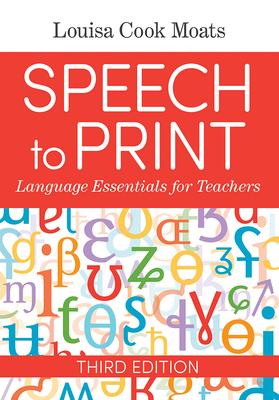- the history of the English language and its effect on spelling
- English phonology, including speech sounds and their distinctive features
- how print represents speech in English
- the morphological aspects of words
- syntax and its instruction
- how meaning is conveyed with language
Through case studies, activities, recommended teaching principles, and close analysis of real-world student work samples, teachers will also receive invaluable insight into how their students should be taught. Ideal for use in preservice courses and in-service professional development sessions, this essential textbook will give educators the strong foundation they need to teach language and reading skills to students with and without disabilities. WHAT'S NEW:
- New and expanded practical content on the how of language and reading instruction
- New and updated chapter exercises
- New faculty support materials
- More on key topics like program and curricula selection, frameworks for instructional planning, and problem solving when students are slow to respond to intervention
- More accessible, undergraduate-friendly tone and structure
- Additional graphics to illustrate key concepts
NEW FACULTY SUPPORT MATERIALS! Support your instruction with a complete package of online companion materials, including chapter quizzes, a sample syllabus/course outline, PowerPoints to accompany each chapter, PDF handouts for selected concepts, and a video demonstrating production of all the sounds in the English language. Watch the webinar recording
